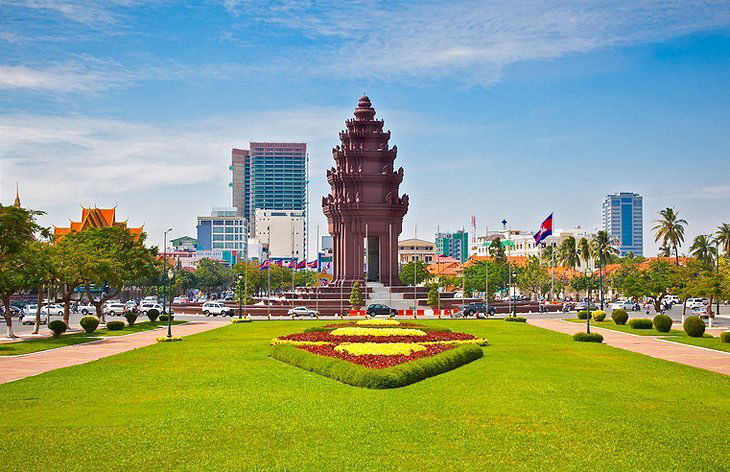
Travel Guides & Information

Cambodia
Best known as both the home of the colossal temples of Angkor Wat and for the brutal Khmer Rouge era of the 1970s and later civil war, Cambodian history encompasses both some of humanity's greatest artistic accomplishments and most horrific deeds.
The history is what draws most travelers here, but this Southeast Asian nation has more tourist attractions to offer for those who linger longer than a short temple hop to Siem Reap.
Beyond the temples, Cambodia is a prime destination for Southeast Asia travels that manages to charm all who come.
The coastline of sandy white beaches tempts every sun sloth. The jungle-swathed countryside is geared up for the more intrepid, and the buzzing capital of Phnom Penh envelops visitors in the frenetic pulse of contemporary Cambodian city life.
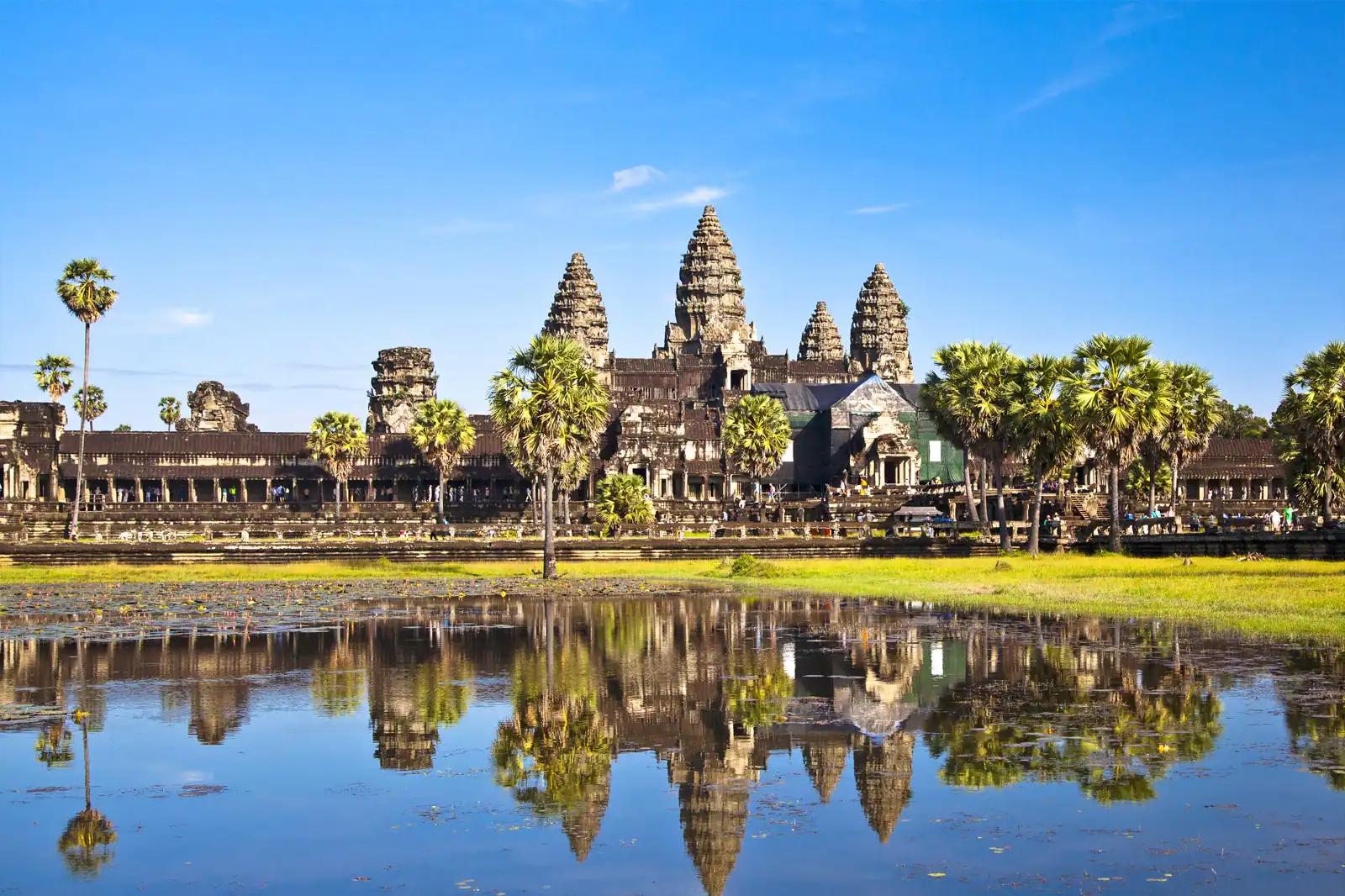
Angkor Wat
This temple city is the number one tourist spot in Cambodia.
Accessed from the town of Siem Reap, the temples of the Angkorian period are so ambitious in scale and in the majesty of their construction, that Angkor Wat is rated as one of the world's must-see ancient sites.
Built between 802 and 1432, this was the largest city in the world during the medieval age and the vast powerhouse of the Khmer kings who endeavored to outbid their predecessors in the beauty of their construction.
As the city's wooden dwellings were encroached and then decayed by the surrounding jungle, what remains today, are just those mighty temples.
The temple of Angkor Wat itself, the world's largest religious building, is only one sliver of the site in total, and the sprawling circuit of temples deserves three days to explore if you want to understand the scope of the Angkorian period's architectural achievements.
For those short on time though, the main highlights after Angkor Wat are the tree-root clasped temple of Ta Prohm (which first found international fame as a location used in the movie Tomb Raider), the Bayon Temple for its 216 stone-carved faces, Angkor Thom and Preah Khan.
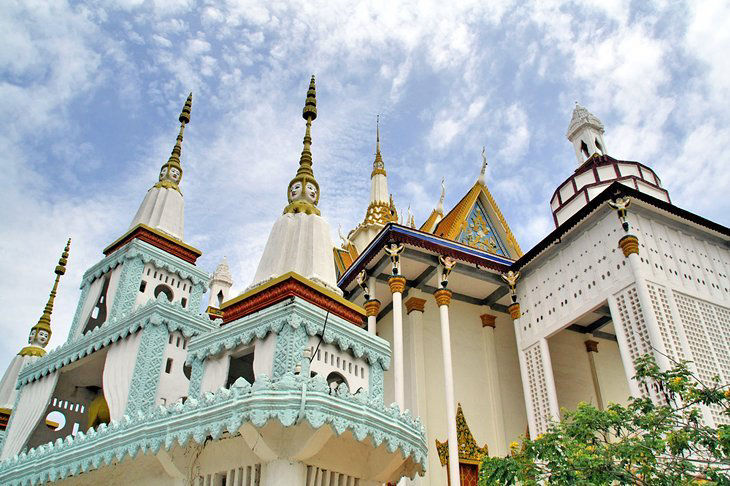
Phnom Penh
Cambodia's capital is the frenetic heartbeat of the nation; a city of chaotic streets abuzz with motorbikes and car horns that can frazzle at first glance.
Deserted completely during the Khmer Rouge madness and left to wither and decay, Phnom Penh has bounced back to become one of Southeast Asia's most dynamic cities.
For visitors, this is Cambodia's most cosmopolitan destination, with a café and restaurant scene unrivaled in the rest of the country.
It's also home to a scattering of important historic sites that help unravel both Cambodia's modern and ancient history.
The National Museum is home to a swag of Khmer sculpture that traces the nation's history from the pre-Angkorian age right through to the phenomenal majesty of the god-Kings of Angkor.
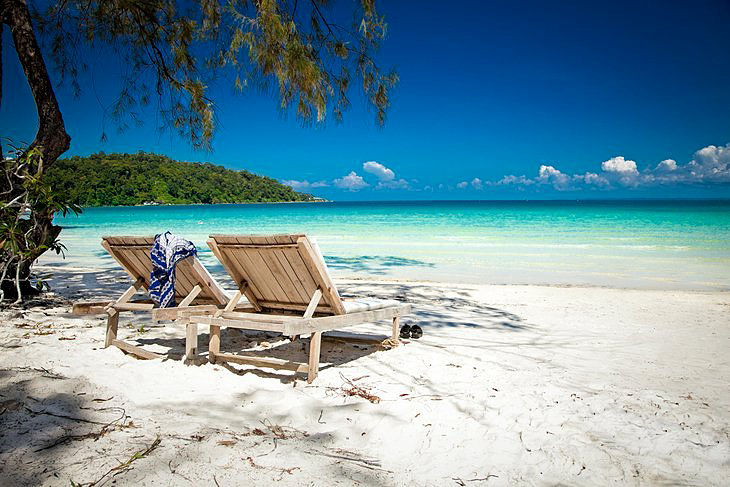
Koh Rong Samloem
Just off Cambodia's south coast lie a scattering of islands just as beautiful as their Thai counterparts to the west, but much less visited.
Compared to the now very developed islands of Koh Samui and Phuket, Cambodia's islands are a slice of laid-back tropical bliss, where sun and sand take center stage, and the big resorts have yet to make their mark.
Of all the islands, Koh Rong Samloem is one of the most beautiful, with the long, sandy Saracen Bay home to a dozen beach hut resorts that offer a welcome respite from the world.
It's really all about hammock-time here, but there's plenty of scuba diving activities on offer for the more active.
You can access these islands from Sihanoukville.

Siem Reap
Siem Reap is usually seen by travelers as among Cambodia's top places to visit due to it being the base for Angkor Archaeological Park, but the town itself offers more things to do beyond the mighty temples.
This is the country's major activity center, with bundles of tours on offer, from cycle trips around the lush countryside just outside of town to Cambodian cookery tours.
Shoppers will also find plenty to keep them occupied, as central Siem Reap is brimming with opportunities to browse traditional crafts.
Make sure to visit Angkor National Museum, before heading to Angkor Wat itself, to dose up on the history of the site. The exhibits here explore the breadth of culture and artistry of the Khmer empire.
For evening entertainment while in town, don't miss Phare The Cambodian Circus. This internationally-renowned circus troupe and social enterprise puts on dazzling shows where performers combine theater, acrobatics, and music.
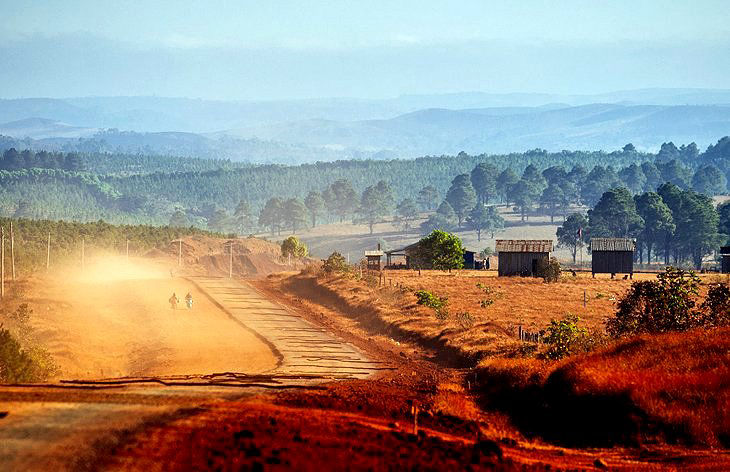
Ratanakiri
Ratanakiri is outback Cambodia, and the endless red-dirt roads of the region, leading to ethnic minority villages, are an intrepid traveler's delight.
For those with an adventurous streak, the province is one of the best places in Cambodia for trekking, from spotting gibbons at Veun Sai-Siem Pang Conservation Area, where overnight trips involve sleeping in hammocks and early rises to track buff-cheeked gibbons, to hiking in Virachey National Park home to elephants, tigers, and sun bears.
There's more relaxing options on offer as well. The emerald water of Yeak Lom Crater Lake just outside of Ban Lung town is a tranquil swimming spot, while the waterfalls of Chaa Ong and Ka Tieng are fun diversions that provide more opportunities for getting wet.
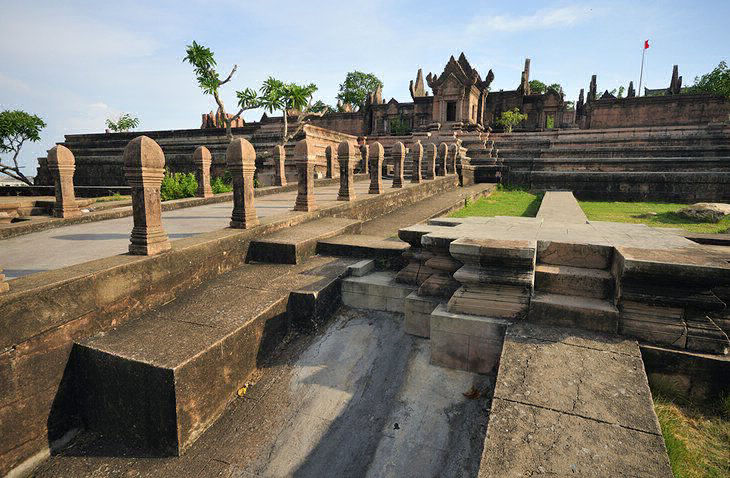
Prasat Preah Vihear
The temples of Angkor Wat may gain all the glory, but Prasat Preah Vihear wins the prize for the most dramatic location.
Sitting atop the Dangrek Mountains, on an escarpment with dizzying views across the Cambodian floodplains, Prasat Preah Vihear is a monumental temple complex of intricately carved pavilions linked by long causeways, built originally to honor the god Shiva.
The temple is snug against the border with Thailand and has historically been a point of contention between the two nations, who both claim it as their own.
The International Court of Justice ruled in Cambodia's favor in 2013 after border disputes flared up between 2008 and 2011.
Tensions have dissipated in the last few years, meaning this UNESCO World Heritage Site can now reclaim its rightful role on the tourist trail.
Access is from Sra Em, although most visitors come on a day trip from Siem Reap (200 kilometers south).

Battambang
The countryside of rice fields and tiny villages surrounding the northwest city of Battambang holds some of the most tranquil rural scenery in Cambodia, and the area is home to swags of historic riches as well.
All this has made the city itself a popular destination on traveler itineraries.
For history fans, the temples of Phnom Sampeau, Phnom Banan and Wat Ek Phnom are all within day-tripping distance, while the famed Bamboo Train - a single-line rail track where "carriages" made from a platform of wood and bamboo travel between Battambang's east bank and the tiny village of O Srav - is one of the most popular activities for visitors.
Battambang itself is a rather sleepy city compared to the buzz of the capital, with a central district brimming with colonial buildings.
For those who found Phnom Penh's hectic buzz a bit too much to handle, Battambang is a thoroughly approachable town to use as a base.
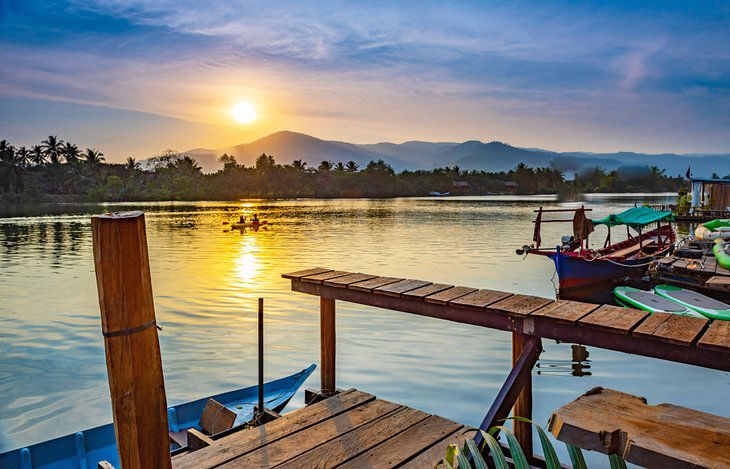
Kampot
The laid-back riverine town of Kampot has oodles of old-world ambience.
The compact central district is a joy to ramble around, full of surviving shop-house architecture, some of which has been painstakingly restored.
Kampot's charm lies in its exceedingly chilled-out atmosphere, and many a traveler finds themselves waylaid here longer than they expected, having succumbed to its easygoing pace.
For the more active though, this is also an excellent base for discovering the surrounding sights of the south.
The old French summer getaway of Boker Hill Station, with its abandoned church and eerie, empty shell of a once-grand hotel, is an easy day trip from town, as are the limestone caves of Phnom Chhnork and Phnom Sorsia both with old temples inside.
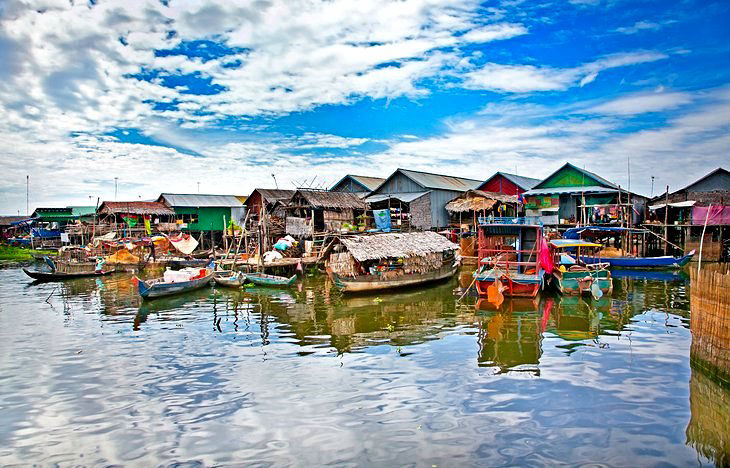
Tonlé Sap Lake
Tonlé Sap is Cambodia's most important waterway and Southeast Asia's largest freshwater lake.
As well as being an important source of food and a vital tool for Cambodian irrigation, the lake itself is home to 170 floating villages that depend on fishing for their livelihood, with homes built directly on the water.
The houses, shops, churches, schools, and temples of these villages are built on rustic buoy foundations of lashed together barrels and bamboo, and all transport is by boat. They're a fascinating place to spend a day exploring.
One of the most interesting is the sprawling village of Kompong Luong, near the town of Pursat on Tonlé Sap's western shore, although the most popular village to visit is Chong Kneas near Siem Reap.
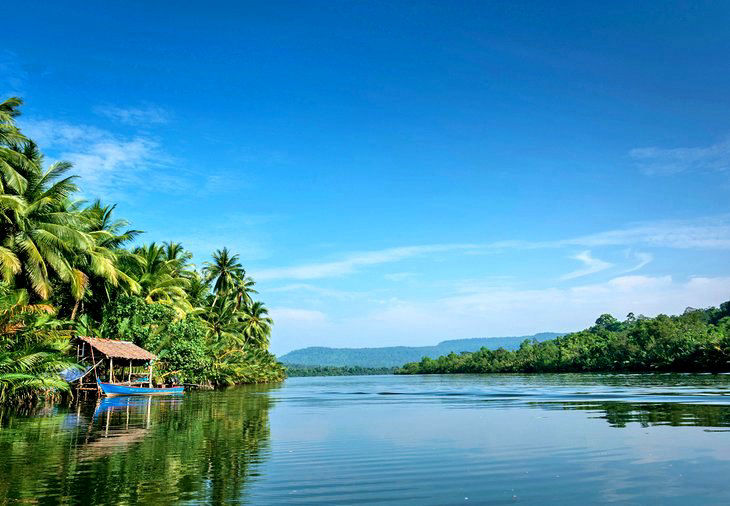
Koh Kong Conservation Corridor
The Koh Kong Conservation Corridor stretches across an area within Cambodia's Cardamom Mountains, south of the border town of Koh Kong in the country's southwest.
The highlands here, home to dense rainforest, winding rivers, and waterfalls, offer plenty of opportunities for hiking and boat tours.
Head to the Tatai River if you want to simply soak up the lush surroundings and take a time out from life. Here, you'll find a handful of boutique eco-resorts scattered along the riverbank all offering activities such as day hikes and kayaking.
Further south in the Cardamoms is the village of Chi Pat, an eco-tourism center with simple homestay and guesthouse accommodation and plenty of activities, ranging from multi-day treks into the forested mountains to wildlife-spotting river boat trips.
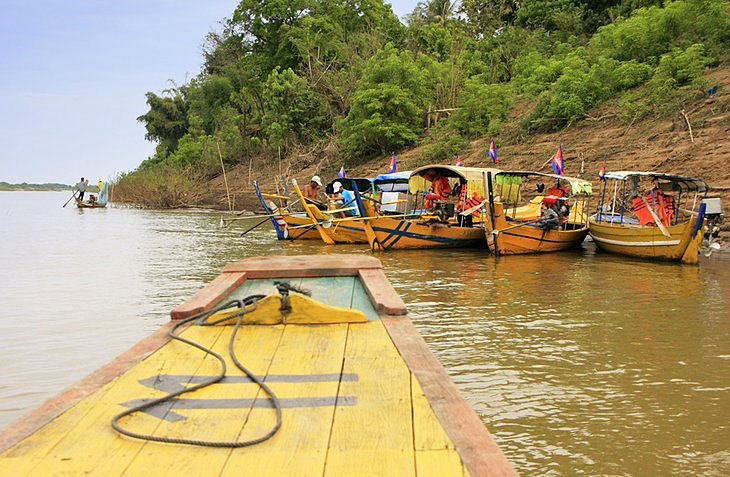
Kratie
Spread along the banks of the mighty Mekong, Kratie has become a major destination for travelers due to its dolphin-watching tours.
The endangered Irrawaddy dolphins are endemic to the Mekong, and environmental measures have now been put in place to try and help their dwindling numbers.
Tourism has played a good role in trying to protect the dolphins by offering an alternative economy to fishing.
To see the dolphins head to Kampi, just north of Kratie, where there are plenty of boat tours available.
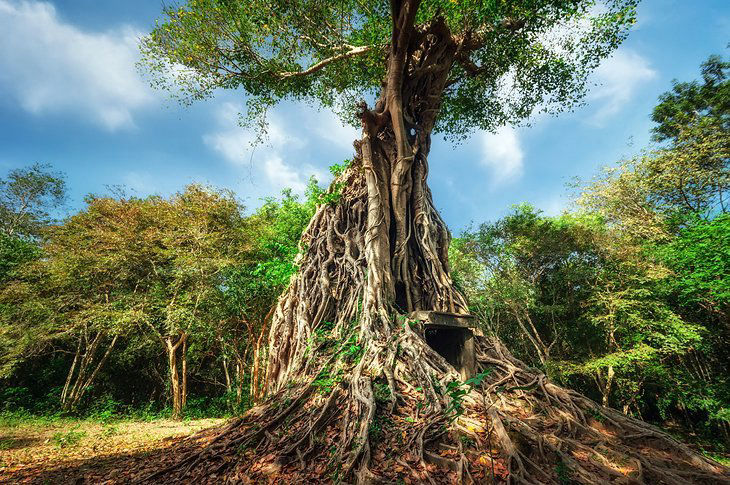
Sambor Prei Kuk
This pre-Angkorian temple site dates from the early 7th century when it was the capital of the Upper Chenla Empire.
More than 100 brick temples dedicated to various Hindu gods sit within the forest here, many half-swallowed by mammoth tree roots.
Archaeologically, the site is extremely important, containing some of Cambodia's oldest surviving buildings, but you don't have to be an archaeology buff to appreciate the ethereal beauty of this tree-wrapped site.
The most important temples in the archaeological site include Prasat Sambor, Prasat Tao and Prasat Yeay Peau which all have remarkably clear carvings on their temple walls and plenty of ethereal ambience provided by twisting tree trunks and coiling vines.
You can access Sambor Prei Kuk from Kompong Thom.
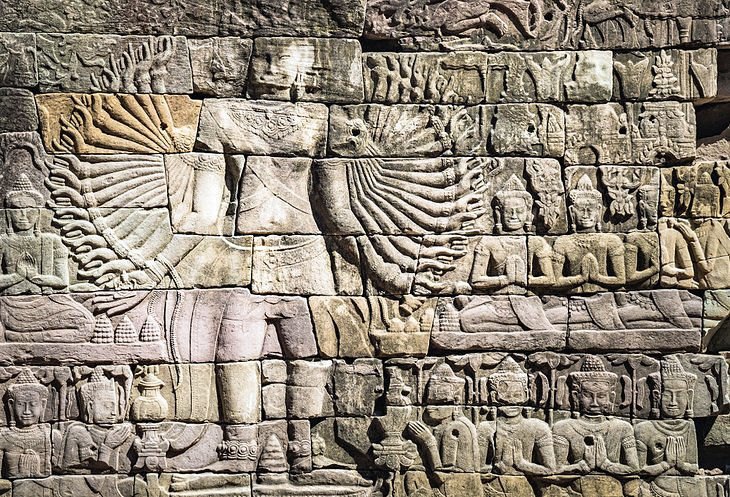
Banteay Chhmar
This mammoth temple complex sits consumed by surrounding jungle in Cambodia's lonely northwest, providing the perfect opportunity to discover the highlights without the crowds.
It was built by the 12th-century Angkorian king Jayavarman VII, and the remarkable stone reliefs along its walls are some of the most intricately detailed you'll see in the country.
In particular, the spectacular bas reliefs depicting Avalokiteśvara on the south wall and the dizzying array of battle scenes depicted on the eastern walls are prime examples of the Angkorian era's artistry.
The village neighboring the archaeological site has simple homestay accommodation. Otherwise, most people stay in Sisophon (60 kilometers south) or take a day trip to the ruins from Siem Reap.
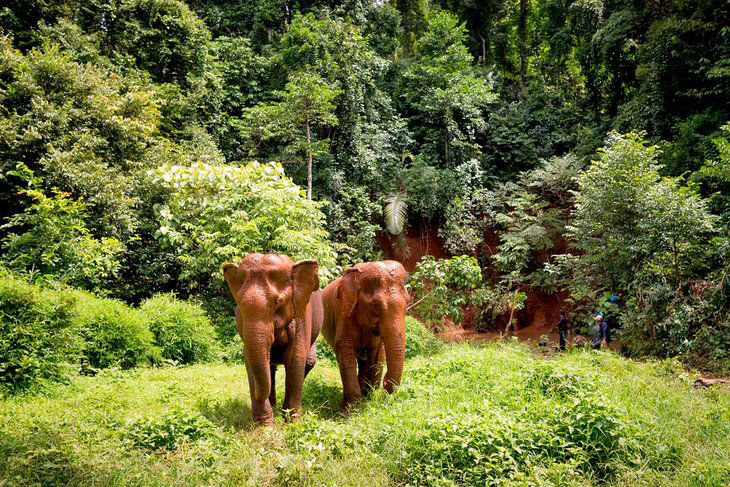
Mundulkiri
Adventurous travelers beeline to the hill country of Mundulkiri Province in Cambodia's far east for wildlife spotting, village life, trail-bike tours, and the Elephant Valley Project.
The most famous tourist attraction in the region, the Elephant Valley Project offers visitors a chance to walk with the sanctuary's elephants (no riding allowed) while providing an opportunity for local mahouts (elephant keepers) to earn a wage that doesn't involve overworking their elephants.
For adrenaline-junkies, the Mayura zipline course skims right over the top of Bou Sra waterfall, while bird-watchers and wildlife spotters will want to take a tour into Seima Protected Forest, home to gibbons, the endangered black-shanked douc langurs, and plentiful birdlife.
The small town of Sen Monorom is the main base for travelers in Mundulkiri and within easy day-tripping distance to all of the tourist attractions.
When is the best time to visit Cambodia?
Most visitors who arrive in Cambodia are heading to the Angkor Wat temples as their main destination - so it makes sense that the best time to visit Cambodia is when the temples are at their best. Weather-wise, the best time to visit Siem Reap and Angkor Wat is between December and February, when temperatures drop into the high 20s and the humidity is much lower.
However, these months are part of the cool season, which is also high season in the country - this means higher prices, bigger crowds, and more expensive airfares. For better prices and slightly smaller crowds, consider arriving in March or early April - while temperatures are rising fast at this time, the rainy season is just starting by then, so you should be able to still enjoy the outdoors.
Phnom Penh has hot and humid weather all year-round, with just a small dip in temperature and humidity dropping to around 70 percent during the cool season. This is also a good time to visit Koh Rong, Cambodia's best beach destination.
Visa to Cambodia
To apply for an e-visa to Cambodia online, click on the banner below:
Booking a Hotel in Cambodia
Before you travel to Cambodia, we recommend booking your hotel stay with Agoda to get the best deals and rates. Agoda will match any price on the web or refund the difference, to check prices, availabilty and booking click on the banner below:
Temples in Siem Reap attract millions of visitors each year, especially those in the expansive Angkor Archaeological Park. Listed as a UNESCO World Heritage site in 1992, there are approximately 50 Buddhist and Hindu temples dating back to the 12th century within its grounds. Further away from Siem Reap are other notable Hindu temples, some of which are older than Angkor Wat. There's so much to do in Siem Reap why not book a tour discover more and simply have a geat time?...